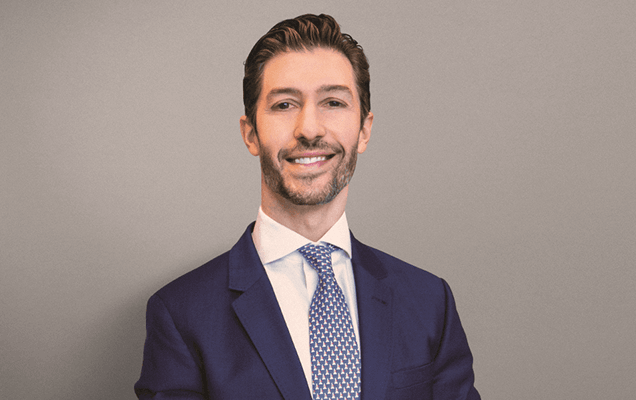One question patients ask when they are considering treatment after a Chiari malformation diagnosis is, “Is Chiari decompression brain surgery?” To help you understand the answer, the following information will explain what Chiari decompression is, the benefits and risks of the procedure, as well as what you can expect before and after your surgery.
About Chiari Malformation
Having an understanding of how a Chiari malformation develops can be helpful when discussing Chiari decompression surgery. Most cases of Chiari malformation are developmental, which means the skull did not grow large enough to accommodate the cerebellum, an area at the back of the brain. As a result, a portion of the softer brain is displaced through a hole at the base of the skull called the foramen magnum. The portion extending outside the skull are called the cerebellar tonsils.
The foramen magnum is where the spinal cord leaves the skull and is a physiologically important space. If it is blocked by the cerebellar tonsils, there may be a buildup of cerebrospinal fluid (CSF) and pressure on the brainstem and spinal cord, leading to the symptoms, some of which you may have been experiencing.
What Is Chiari Decompression?
Chiari decompression surgery is performed to help create more space for the cerebellum and release any pressure and/or compression within the foramen magnum. This reestablishes the flow of CSF, helping alleviate symptoms and prevent further damage to structures in the area.
Broadly speaking, there are two categories of Chiari decompression surgery. The first is a traditional surgical approach, in which the surgeon removes a section of bone at the base of the skull and expands a section of the dura, or covering of the brain, with a flexible patch.
The surgeon may also shrink the size of the cerebellar tonsils through the application of heat in order to create more space. The surgeon may also remove a small section of your uppermost vertebrae in a procedure called a cervical laminectomy. The soft tissue is repaired and the incision site is closed using sutures or staples.
The second type of Chiari decompression surgery is a minimally invasive approach using microscopic visualization and specialized instruments. This approach allows the surgeon to make a smaller incision and disturb less of the surrounding tissues, typically resulting in less post-operative discomfort and reduced healing time. Using a minimally invasive technique also eliminates the need for a patch.
Benefits and Risks of Chiari Decompression
Before your doctor recommends Chiari malformation surgery, he or she must take into consideration all of the benefits and potential risks of the procedure. Therefore, if your doctor has suggested you undergo Chiari malformation surgery, he or she has already determined that the benefits outweigh any risks.
Benefits
The benefits of Chiari malformation include preventing further damage from occurring, as well as relief from symptoms you are already experiencing. Though some symptoms may take up to a year to resolve following surgery, many patients experience some form of relief immediately from symptoms such as:
- Headache
- Dizziness, vertigo and nausea
- Difficulty swallowing, speech and/or vision
- Trouble sleeping
- Facial and/or limb numbness
- Neck pain
Risks
There are general risks involved with any surgical procedure, which your doctor will discuss with you but include:
- Reaction to anesthesia
- Pain and/or infection at the incision site
- Bleeding
- Blood clots
- Stroke
Let's build your treatment
path, together.
There are also two risks related specifically to Chiari malformation surgery: CSF leakage and hydrocephalus. CSF leakage can occur if the dura is punctured and not repaired with a watertight seal, leading to a buildup of fluid under the skin or through the incision, nausea and headaches.
Hydrocephalus is a buildup of CSF within the skull, leading to an increase of pressure.
Both of these conditions often resolve on their own, but if they do not, your surgeon can repair the leak surgically in the case of CSF leakage and place a shunt to help divert excess CSF if you experience hydrocephalus. The risk of both of these complications may be decreased if you undergo minimally invasive Chiari surgery.
What to Expect Before and After Your Procedure
Before your Chiari malformation surgery, your doctor will give you specific instructions about food and drink intake and any modifications to your medications. These are for your comfort and safety during the procedure, so it is important you follow them exactly.
Following your procedure, you can expect to spend up to a week recovering in the hospital. This depends on your individual health factors and which surgery you had, so your doctor will be able to give you a more specific idea of what your recovery will be like.
Once you are released from the hospital, you will recover at home for approximately six to 12 weeks before resuming your normal activity levels and/or returning to work. Your doctor will establish activity restrictions for you to follow immediately following your surgery, which will gradually be lifted as your body heals. Again, these depend on your individual situation and vary between patients.
A Better Understanding of Peace of Mind
By taking the time to educate yourself about your upcoming Chiari malformation surgery, you have a better idea of what you can expect before, during and after your procedure. Take this knowledge with you into your next appointment with your doctor, and be sure to bring up any questions you may have. Being comfortable with your Chiari malformation treatment can allow you to rest easier through the process and give you peace of mind.

About Dr. Paul R. Gigante
Dr. Paul Gigante is an accomplished neurosurgeon in Central Jersey and a proud member of Neurosurgeons of New Jersey, practicing out of their Livingston office located conveniently on South Orange Avenue. He is recognized as a leading spine surgeon for both minimally invasive and complex procedures. Dr. Gigante is a graduate of Harvard Medical School and completed his fellowship at Stanford University in functional neurosurgery. His specialties are deep brain stimulation for Parkinson’s Disease and other nervous system disorders, spinal cord stimulation for chronic pain disorders, and surgical treatments for chronic nerve pain conditions. He also specializes in brain tumor surgeries. Dr. Paul Gigante is currently accepting new patients.
Recent Posts:






